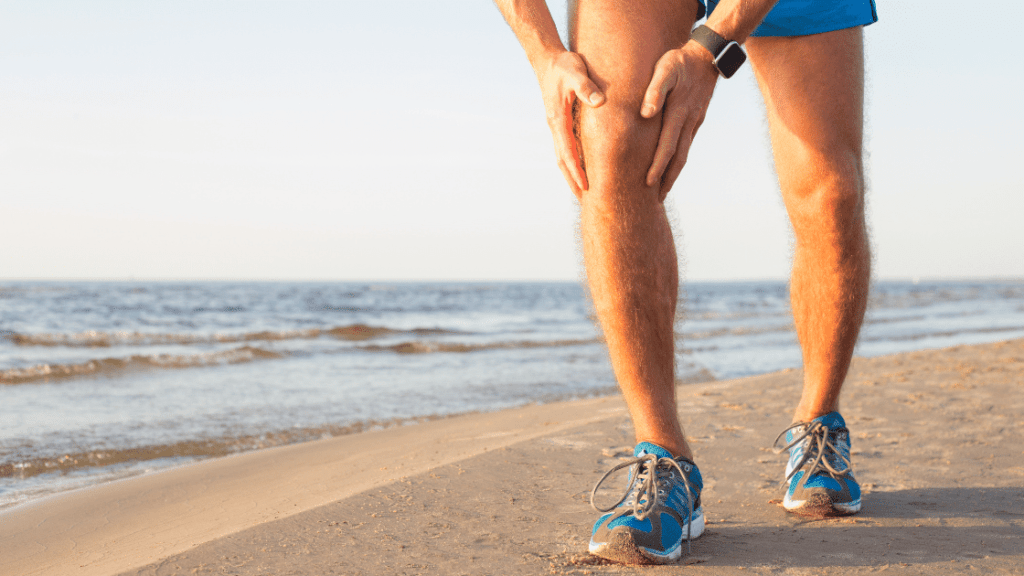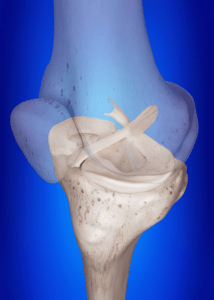ACL Injury Part 1: Prevention

Resulting from a blow to the anterior cruciate limit, an ACL injury is a term most often heard on the sports channel, the playing field, or the basketball court. Whether it’s a tear or a sprain, these injuries have a long road to recovery ahead, and often involve surgery with months of rehab.
If that sounded a bit scary and intense, I can assure you that the next blog, ACL Injury Part 2: Full Recovery Is Possible, will be more up-lifting. But for now, we’ll address how to prevent this type of injury.
Before I continue, let’s take a look at that ACL. It’s the thick band of tissue that connects the femur (thigh bone) to the tibia (shinbone), at the knee. When the knee bends and rotates, the ACL is what holds it in place. It stops your shinbone from sliding out in front of your thigh bone.
Injuries to this area occur most often in basketball, soccer, football, tennis, volleyball, and skiing. So, what can be done to reduce the risk of injury before attempting one of those activities?
How to Reduce the Risk
Strength Train
- Strong muscles are key to injury prevention. For ACL injury prevention, you’ll want to target the muscles that attach at the knee: the quadriceps and hamstrings. Focusing on these muscle groups will improve stability of the kneecap and enhance athletic performance.
- Squats, lunges, leg lifts, basic bridges, kettlebell swings, and hamstring curls are a few examples of ACL strengthening workouts.
Improve Balance
- There is a reason why ACL injuries are so common in basketball. These tears are often the result of quick changes in direction and sudden stops. Basketball is a very, for lack of a better term, back-and-forth stop-and-go sport. Look at what the fast pace and constant possession changes do to the players’ knees! Those twists and pivots can most definitely cause a strain if those knees are off balance!
- Other than the unnatural knee twists, good balance will also prevent serious falls or collisions with other players, which are the other two leading causes of sports-related ACL injuries.
- So go do yoga, pilates, and other balance promoting activities!
Warm Up Before Stretching
- A warm muscle is a more pliable muscle. A more pliable muscle is less likely to encounter injury. Before you stretch, try five minutes of jumping jacks or a light jog to get the blood pumping. If you’d like, you can also apply heat directly to the quads or hamstrings.
Use Correct Form
- This is where a personal trainer can really come in handy. If you’re doing your ACL-targeted workouts on your own, you want to be absolutely sure you’re doing them properly! Improper form won’t strengthen the muscles you’re trying to target. And that’s not all! Poor mechanics will strain your musculoskeletal system, too. Your muscles, ligaments, tendons, bones, joints… they’ll all suffer when hyperextended.
- Ask a trainer for help with the crossover lunges before you try them out yourself! Seriously, if you’re trying to prevent an ACL injury, an incorrect crossover lunge is the last thing you want to do.
Wear Proper Footwear
- I’ve talked about this in the first section of a different article about mistakes to avoid before running a marathon. Your strong knees and knowledge of good form aren’t enough to save you from bad shoes. If they’re poor quality or don’t fit, return them. They’ll either throw you off balance or they’ll explode. Yes, shoes can explode. Watch this video of Zion Williamson and his exploding shoe if you don’t believe me (he only suffered a minor knee injury, but still).
The 35 second mark.
Now You Know!
In the upcoming blog, ACL Injury Part 2, we’ll address how ACL injuries can be treated and what can be expected during rehabilitation. You’ll even hear about athletes who returned to sports after a full recovery!

Katrina Jenkins
Author, Licensed Massage Therapist
Katrina Jenkins graduated from Towson University in 2013 with a Bachelor’s Degree in Health Science and worked as a nurse’s aide briefly before pursuing her true passion. She graduated from the Massage Therapy Institute of Colorado in April 2016 with honors and completed the Touch of Healers Scholarship Program the following summer. She has been a part of the Moyer Total Wellness Team since the summer of 2017.
Resources
Gokeler, A., Seil, R., Kerkhoffs, G. and Verhagen, E. (2018). A novel approach to enhance ACL injury prevention programs. Journal of Experimental Orthopaedics, 5(1).
Medlineplus.gov. (2015). Anterior cruciate ligament (ACL) injury: MedlinePlus Medical Encyclopedia. [online] Available at: https://medlineplus.gov/ency/article/001074.htm.
Yetman, D. (2020). Best Quad Exercises: At-Home Quad Workout Routine. [online] Healthline. Available at: https://www.healthline.com/health/best-quad-exercises.
Photo Credit
Canva by Kaspars Grinvalds
Canva by Science Photo Library

